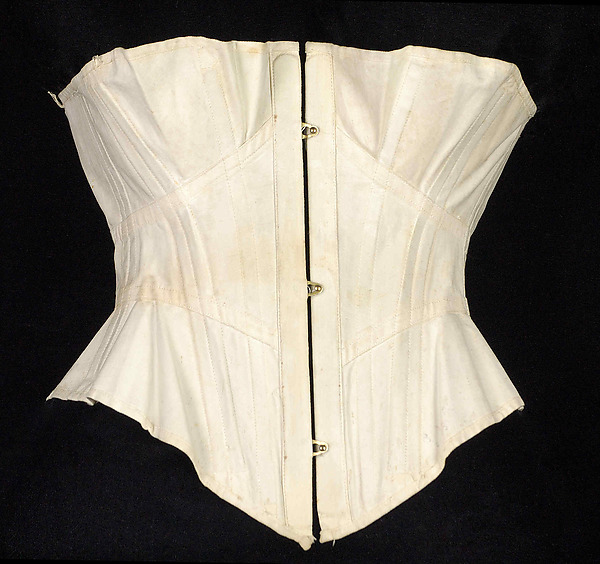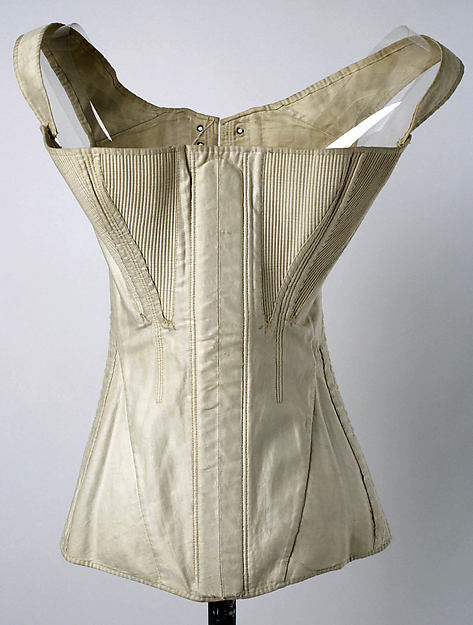 |
| Corset, c. 1861-3 This example is shaped with curved pieces seamed together. |
 |
| Corset, c. 1860 The three studs belong to a separating metal busk, which allows the corset to be taken on and off without fully unlacing the back. |
 |
| Corset, 1840s This corset has the shoulder straps, solid busk, and long line of the early 1800s. By the 1860s, shorter corsets are more common. |
 |
| Stays from The Workwoman's Guide, 1838/40 Like the above, they are shaped with triangular gores over the bust and hip, and have a solid center busk and shoulder straps. |
 |
| Pattern pieces from Godey's (1857). Now without shoulder straps, these stays are still shaped with gores at the bust, hip, and stomach. The stays open in the front with a steel busk. An identical pattern appeared in Peterson's two years before. |
 |
| The "Corset de Medici", Peterson's, 1855 |
 |
| Gored "French Corset" from Godey's, 1862 |
 |
| "Victoria Corset", Godey's, 1862 |
 |
| Gored Corset from Der Bazar, 1865 |
 |
| Curved seam corset with separate hip pieces. Patented by Lavinia H. Foy, 1868. |
A very small waist is rather a deformity than a beauty. To see the shoulders cramped and squeezed together, is anything but agreeable; the figure should be easy, well developed, supple: if Nature has not made the waist small, compression cannot mend her work. Dress may do much to lessen the awkward appearance of a thick waist by clever adaptations; by the use of stays both easy and well fitting; by a little extra trimming on the shoulders which naturally makes the waist appear smaller. All this may be done without injury; no stays can answer the purpose so well as those made by a good French stay-maker, who has the art of taking a sort of model of the figure by the extreme exactness of her measurements." --The Habits of Good Society, 1859/1863Another text gives ideal "proportions" (scaled from the Venus di Medicis):
...therefore, the waist of a person five feet three inches high should not be less than twenty-five and a quarter inches; of five feet five inches, twenty-six inches; of five feet seven inches, twenty-six and three quarter inches; of five feet eight inches, twenty seven and a quarter inches. --Medical Common Sense (1863)It concludes that "a very small waist is a defect rather than a beauty, and nothing can be truly beautiful which is out of proportion."
No comments:
Post a Comment